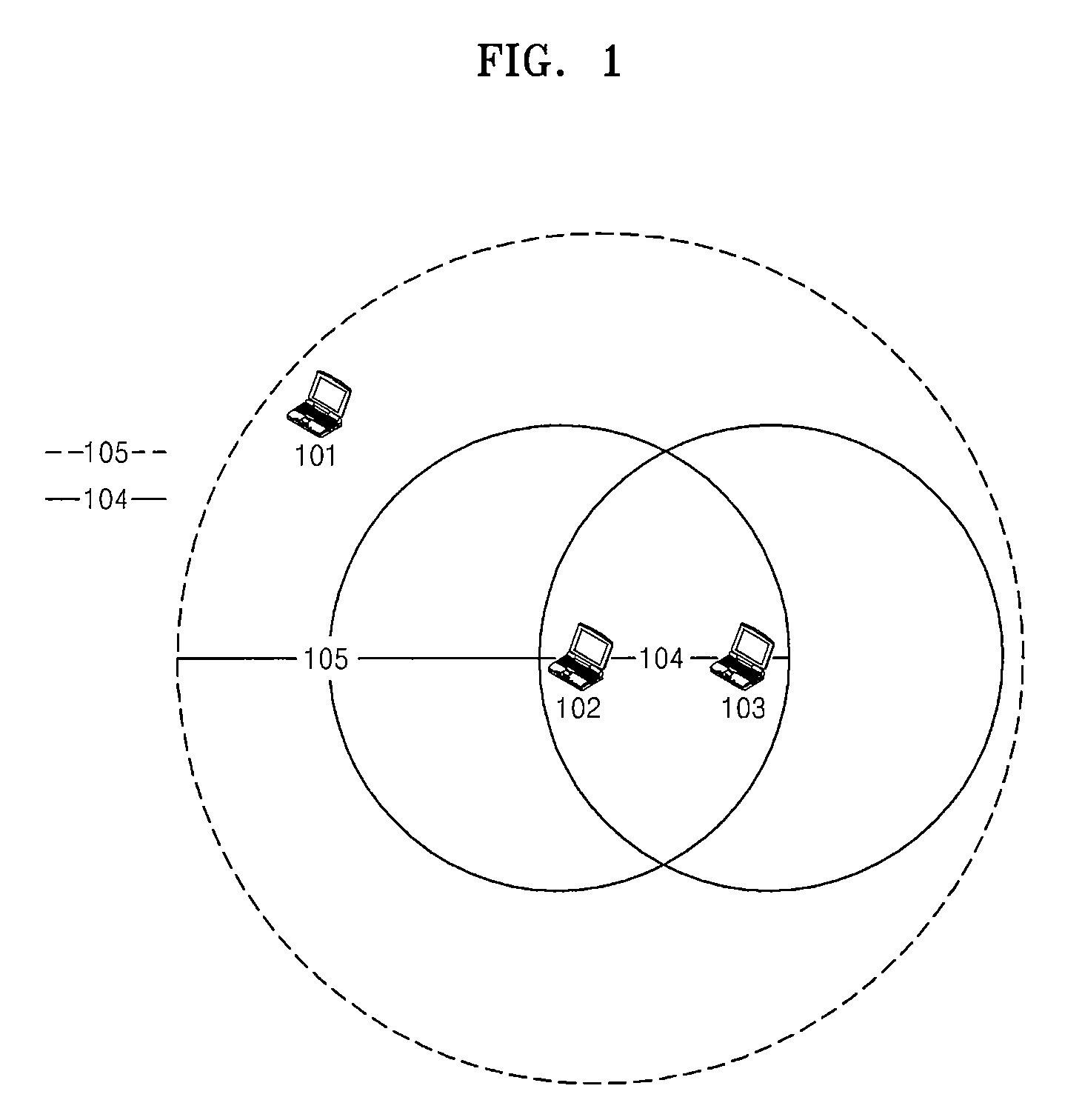Method and apparatus for controlling congestion of nodes in ad-hoc network
a technology of ad-hoc networks and nodes, applied in data switching networks, frequency-division multiplexes, instruments, etc., can solve problems such as remarkable performance decline, no standard media access methods dedicated to ad-hoc networks, and assumed congestion
- Summary
- Abstract
- Description
- Claims
- Application Information
AI Technical Summary
Benefits of technology
Problems solved by technology
Method used
Image
Examples
Embodiment Construction
[0024]Hereinafter, exemplary embodiments of the present invention are described in detail with reference to the attached drawings. For the convenience of description, a method and an apparatus are illustrated together.
[0025]FIG. 1 is a view showing a construction of a wireless mobile ad-hoc network employing the present invention. FIG. 2 is a flowchart of a method of controlling congestion of nodes in an ad-hoc network according to an embodiment of the present invention. FIG. 3 is a view showing time-varying states of channels in the IEEE 802.11 MAC protocol according to an embodiment of the present invention. FIG. 4 is a flowchart showing a process of controlling transmission amounts based on available bandwidths of each node in an ad-hoc network according to an embodiment of the present invention. FIG. 5 is a block diagram showing a construction of an apparatus for controlling congestion of nodes in an ad-hoc network according to an embodiment of the present invention.
[0026]An ad-...
PUM
 Login to View More
Login to View More Abstract
Description
Claims
Application Information
 Login to View More
Login to View More - R&D
- Intellectual Property
- Life Sciences
- Materials
- Tech Scout
- Unparalleled Data Quality
- Higher Quality Content
- 60% Fewer Hallucinations
Browse by: Latest US Patents, China's latest patents, Technical Efficacy Thesaurus, Application Domain, Technology Topic, Popular Technical Reports.
© 2025 PatSnap. All rights reserved.Legal|Privacy policy|Modern Slavery Act Transparency Statement|Sitemap|About US| Contact US: help@patsnap.com



